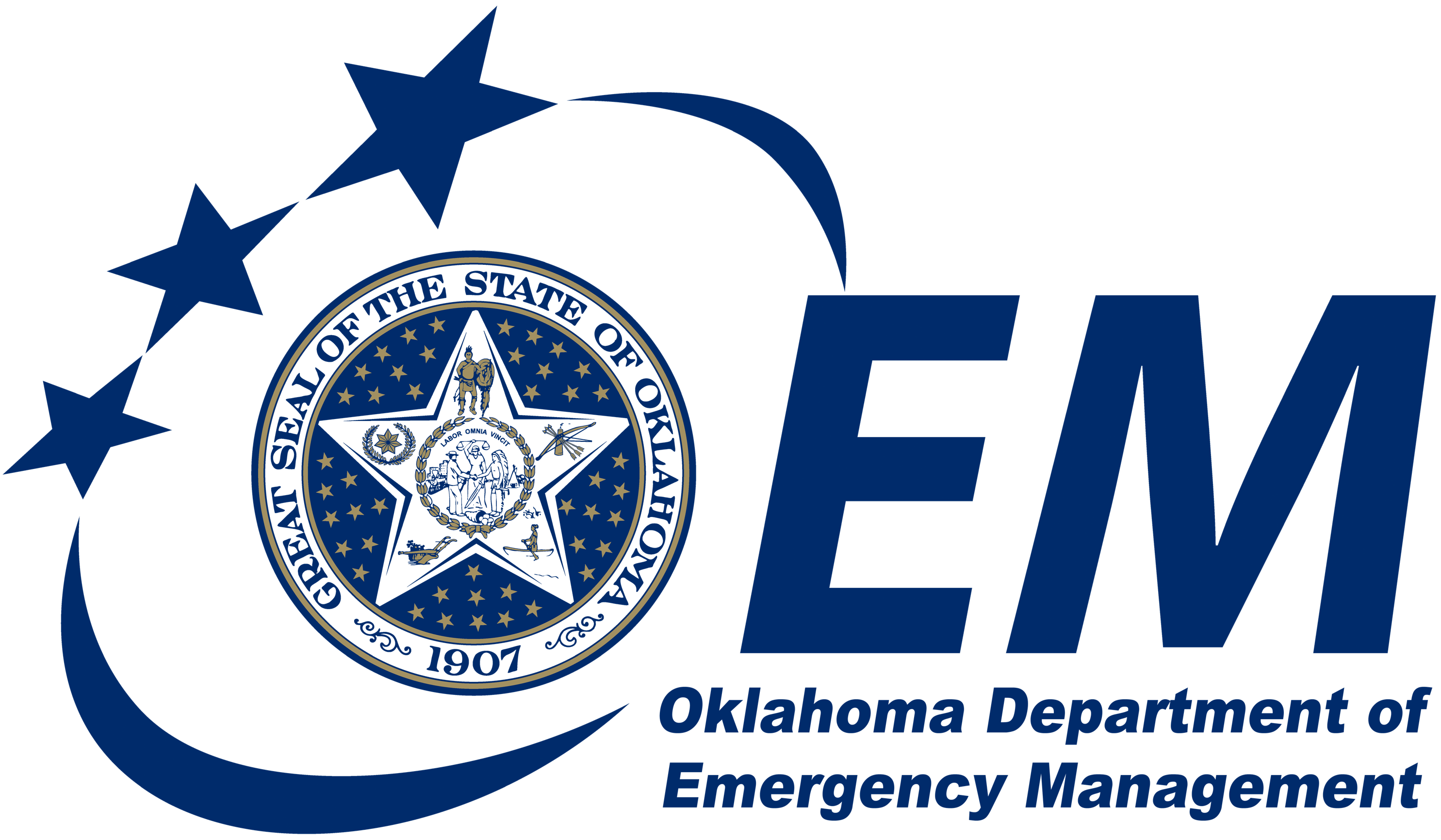STATE EOC ACTIVATED DUE TO SEVERE WEATHER
Situation Update
Oklahoma Department of Emergency Management
Situation Update 1
May 24, 2011 3:15 p.m.
Due to severe weather conditions across Oklahoma, the State Emergency Operations Center has activated. The Oklahoma Department of Emergency Management (OEM) is in contact with emergency managers across the state and coordinating with the Oklahoma National Guard, Oklahoma Highway Patrol, Oklahoma State Department of Health, Oklahoma Department of Transportation, National Weather Service, American Red Cross and Salvation Army.
STATE OF EMERGENCY
A State of Emergency remains in effect for 14 Oklahoma counties as declared by Gov. Mary Fallin earlier today for tornadoes, straight line winds and flooding that began Sunday. The counties included in the executive order are Adair, Blaine, Cherokee, Craig, Delaware, Kiowa, Mayes, Muskogee, Nowata, Okmulgee, Osage, Ottawa, Rogers and Wagoner. The declaration can be amended to add additional counties if conditions warrant. Under the executive order, state agencies can make emergency purchases and acquisitions needed to expedite the delivery of resources to local jurisdictions. The declaration also marks a first step toward seeking federal assistance should it be necessary.
Additionally, the Oklahoma Commissioner of Public Safety, as authorized by the Governor, announced that state agencies were allowed to close at 3 p.m. today due to severe weather conditions in the following counties: Canadian, Cleveland, Lincoln, Logan, McClain, Oklahoma, and Pottawatomie.
WEATHER CONDITIONS
Severe weather is already reported in areas of western Oklahoma. The storm system is expected to impact much of Oklahoma by later this afternoon and into tonight. Damaging, long-tracking tornadoes will be possible with the most intense storms. Tornadoes are expected to impact the I-35 corridor - including the Oklahoma City metro area - between 5 and 7 pm. Motorists are strongly encouraged to consider their travel plans while storms are in the area. Oklahomans are urged to review their severe weather safety plans and be ready to take immediate action when a warning is issued. Forecasters identify this as one of the more dangerous events Oklahoma has seen in recent times.
WEATHER SAFETY TIPS
Keeping informed about the weather is the best way to avoid being caught in a tornado or severe thunderstorm. A battery operated NOAA Weather Radio with a warning alarm feature should be a part of your information system!
It’s also critical that you think about tornado safety before there’s a storm on the horizon, and plan what you will do to stay safe no matter where you may be when storms threaten. Remember these basic guidelines:
GET IN - get as far inside a strong building as you can, away from doors and windows
GET DOWN - get to the lowest floor
COVER UP - use whatever you can to protect yourself from flying or falling debris
- A reinforced underground storm shelter, storm cellar, enclosed basement or safe room are usually the safest places in a tornado. Underground shelters get you out of the way of flying and falling debris, which is a tornado’s most lethal weapon.
- If you cannot get underground, remember the basic guidelines. Get as far inside the strongest building you can find. Stay away from doors, windows and other openings to the outside. Put as many walls between you and the outside as you can.
- Get as low as you can. Go to the lowest floor of the building you’re in.
- Cover up to protect yourself from flying and falling debris. Use whatever you can. Find pillows, blankets, sleeping bags, mattresses. Wearing a helmet or hardhat will help protect your head from debris.
- Being outdoors, in a mobile home, or in a vehicle are all unsafe in a tornado or severe thunderstorm. Find stronger shelter before the storm arrives and remember to get in, get down and cover up.
DIAL 211
For Oklahoma residents seeking non-emergency disaster or health and human service information, please contact your local 2-1-1. Services are available 24 hours a day by dialing 2-1-1 from your home or cellular telephone. Please only call 911 for emergencies.
###
Next Situation Update: As conditions warrant


